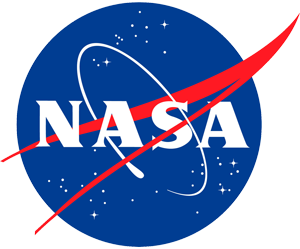GPM Ground Validation Wyoming King Air Cloud Microphysics LPVEx
Table of Contents
Introduction
The GPM Ground Validation Wyoming King Air Cloud Microphysics LPVEx dataset includes, in addition to aircraft parameters, many scientific parameters including static pressure, dew point temperature, relative humidity, mixing ratio, liquid water content, and droplet concentration. Data was collected, as part of the Light Precipitation Evaluation Experiment (LPVEx), from September 11, 2010 to October 20, 2010 in the Gulf of Finland. It should be noted that multiple instruments were carried aboard the University of Wyoming King Air (UWKA) including the Cloud Microphysics instrument and the Wyoming Cloud Radar (WCR) instrument. Data files are in netCDF format. The dataset was collected to aid in achieving the overarching goals of LPVEx, to conduct a comprehensive evaluation of precipitation algorithms for current and future satellite platforms and to detect and understand the process of light rainfall formation at high latitudes.
Citation
The following example shows how to cite the use of this dataset in a publication. For more information, please see our Citing GHRC DAAC and Data page.
Lecuyer, Tristan and J. French. 2013. GPM Ground Validation Wyoming King Air Cloud Microphysics LPVEx [indicate subset used]. Dataset available online, [http://ghrc.nssstc.nasa.gov] from the NASA EOSDIS Global Hydrology Resource Center Distributed Active Archive Center Huntsville, Alabama, U.S.A. doi: http://dx.doi.org/10.5067/GPMGV/LPVEX/MULTPLE/DATA202
Campaign
The Light Precipitation Evaluation Experiment (LPVEx) occurred in the Gulf of Finland in September and October 2010. The purpose of LPVEx was to characterize the ability of CloudSat, the Global Precipitation Mission (GPM) Dual-frequency Precipitation Radar (DPR), and existing/planned passive microwave (PMW) sensors such as the GPM microwave imager (GMI) to detect light rain and evaluate their estimates of rainfall intensity in high latitude, shallow freezing level environments. A map of the LPVEx campaign region with the extent of radar coverage and other campaign related information marked is available through the LPVEx website http://lpvex.atmos.colostate.edu/index.php, along with more detailed information about the campaign. Information on the Global Precipitation Measurement (GPM) mission is available at http://pmm.nasa.gov/GPM.
Instrument Description
The UWKA aircraft is a Raytheon King Air 200T (twin turbo-prop) designed to be used for atmospheric research by the University of Wyoming. It was used during LPVEx to acquire data over the study area; the WCR instrument was one of many used during the campaign. More information about the UWKA aircraft is available at http://flights.uwyo.edu/n2uw/.
The Cloud Microphysics instruments included 2D-P, CIP, CDP (FSSP/2D-C) and measured numerous variables including static pressure, dew point temperature, relative humidity, mixing ratio, liquid water content, and droplet concentration.
Investigators
Tristan Lecuyer
Union South
1308 W. Dayton St.
Madison, WI 53715
Jeffrey French
University of Wyoming
College of Engineering
1000 E. University Ave.
Laramie, WY 82071
File Naming Convention
The GPM Ground Validation Wyoming King Air Cloud Microphysics LPVEx dataset consists of .nc netCDF files. The files are named with the following convention:
UWKA_cloudmicro_YYYYMMDD.c#.nc
Where,
UWKA = University of Wyoming King Air
cloudmicro = Cloud Microphysics instrument
YYYYMMDD = the year, month, and day that the aircraft was flown/data collected
# = 1 or 25 (1 represents data files in which all the data are at 1 hz; 25 represents data files which contain higher rate data, up to 25 hz)
.nc = netCDF file
Data Format
The GPM Ground Validation Wyoming King Air Cloud Microphysics LPVEx dataset is available in netCDF file format.
References
King Air Research. University of Wyoming website: http://flights.uwyo.edu/n2uw/
LPVEx website: http://lpvex.atmos.colostate.edu/index.php
Wyoming Cloud Radar. University of Wyoming website: http://www-das.uwyo.edu/wcr/newwcrpage/
Contact Information
To order these data or for further information, please contact:
Global Hydrology Resource Center
User Services
320 Sparkman Drive
Huntsville, AL 35805
Phone: 256-961-7932
E-mail: support-ghrc@earthdata.nasa.gov
Web: http://ghrc.nsstc.nasa.gov/
|

